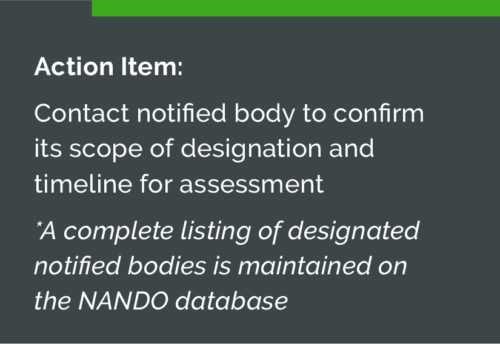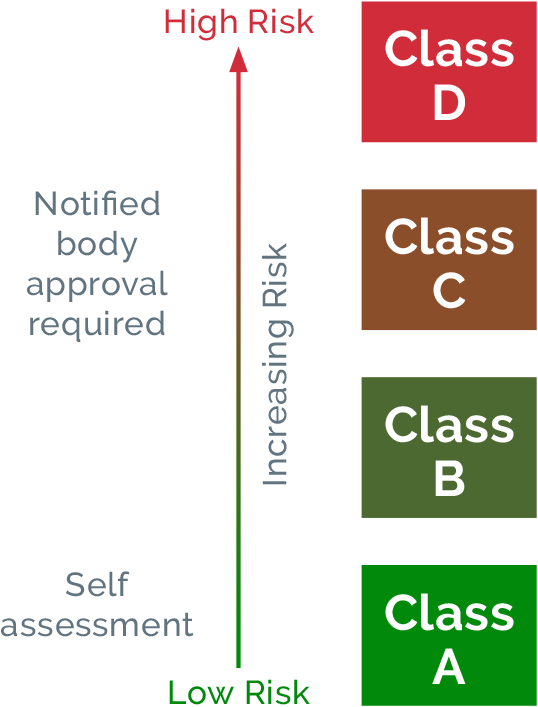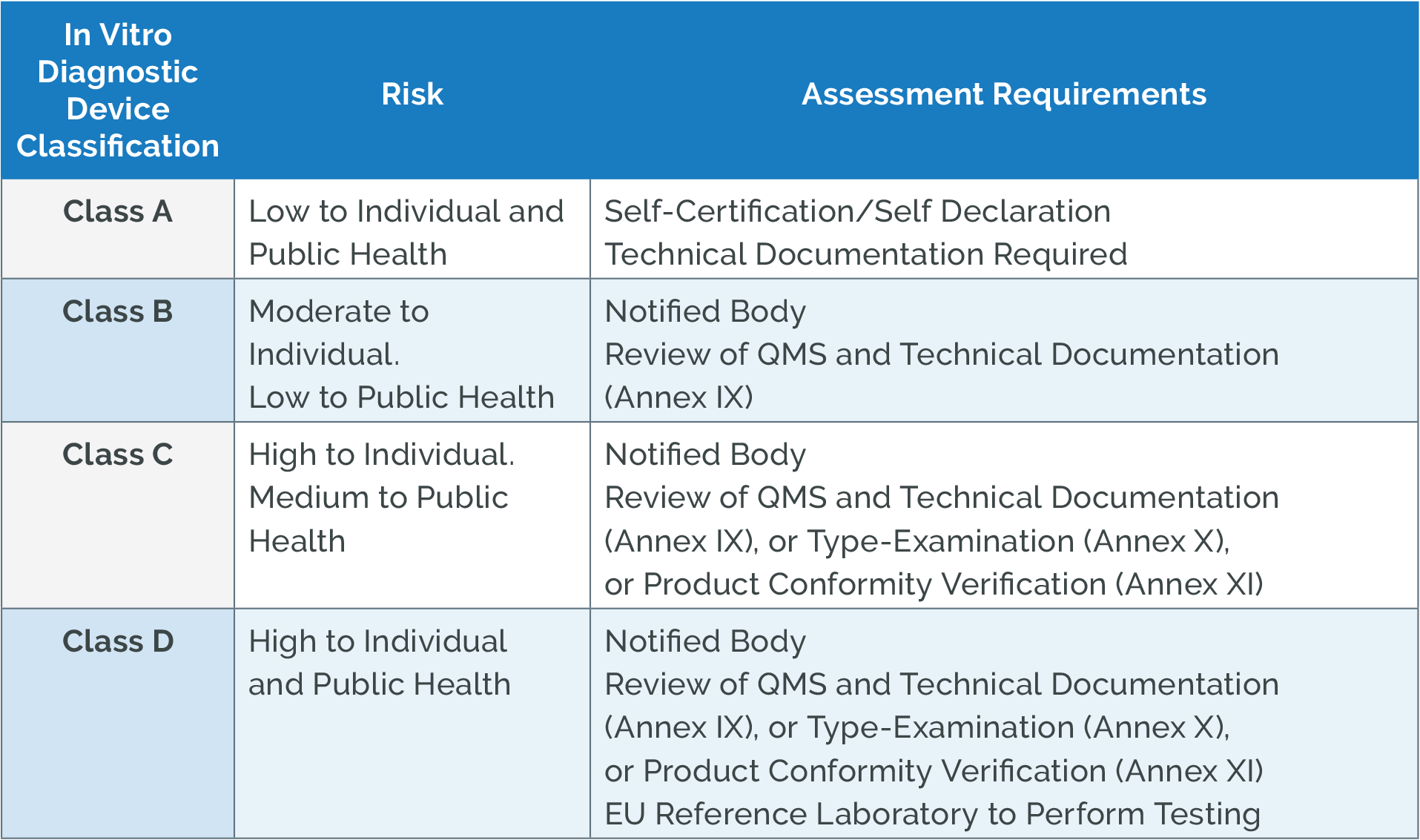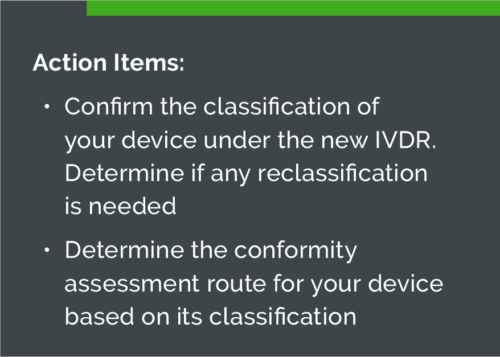-
- North America
- EMEA
Notified bodies play a significant role in helping medical device manufacturers bring new products to the EU market. Their primary responsibility is to conduct conformity assessments and grant CE certificates for devices.

This involves auditing the manufacturer’s quality management system (QMS) and reviewing the technical documentation for the different classes of devices. To issue CE certificates, notified bodies must be recertified and designated according to the new IVDR. The goal is to identify the notified bodies that are truly qualified to ensure the safety and effectiveness of the products that they are evaluating. Starting on November 26, 2017, notified bodies were able to submit applications to become designated under the IVDR. A complete listing of the notified bodies that are officially designated is maintained on the NANDO (New Approach Notified and Designated Organisations) database.
Under the IVDR, notified bodies will take on more responsibility in enforcing regulations through annual on-site assessments as well as unannounced audits of manufacturing processes, subcontractors, and suppliers.
The number of notified bodies has decreased significantly due to the new designation requirements3. This will most likely impact manufacturers’ timelines for product certification as resources become more stretched.
IVDR 2017/746 (Annex VIII) provides a new risk-based classification structure for in vitro diagnostic devices. Devices are now categorized as Class A, B, C, or D. All existing IVD devices on the market will need to be reclassified according to this new system.
 |
Class D devices pose a high risk to individuals and high risk to public health. Examples include devices used for blood screening and the detection of high-risk diseases
Class C devices pose a high risk to individuals and moderate risk to public health. Examples include devices used for cancer testing/ disease staging, companion diagnostics, and genetic testing Class B devices pose a moderate risk to individuals and low risk to public health. Examples include self-testing devices used to detect pregnancy, cholesterol levels, and glucose Class A devices pose a low risk to individuals and low risk to public health. Examples include laboratory devices, instruments, and specimen receptacles |
The classification of the device will determine whether certification by a notified body is needed, as well as the conformity assessment route (i.e., Annex IX, X, or XI).

*Note: If an IVD device does not readily fit into any of the classes listed above, it will be automatically classified as Class B and require notified body supervision. This may significantly increase the number of IVD devices that need to be certified under the new IVDR.
 In addition to classification changes, the IVDR has expanded its definition of in vitro diagnostic devices to include:
In addition to classification changes, the IVDR has expanded its definition of in vitro diagnostic devices to include:
Section 2: Key Changes Under New IVDR
Economic Operator Roles and Responsibilities
Performance Evaluations, Performance Studies, and Post-Market Performance Follow-up
Post-Market Surveillance (PMS)
European Database for Medical Devices (EUDAMED)
Section 3: Quality Management System (QMS) Requirements
Section 4: Steps For A Successful EU IVDR Implementation